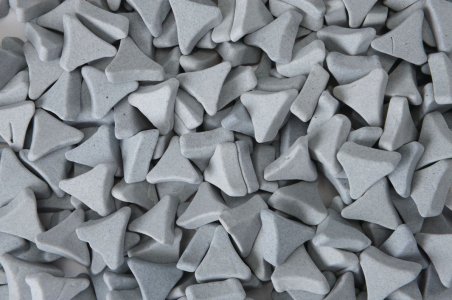- Joined
- Feb 17, 2013
- Messages
- 4,407
Probably not quite as good at vibration damping as "real" concrete. But pretty good nevertheless. Definitely more resistant to cracking - it's plastic, not stone. Plus you're not messing with water-based materials around cast iron. And it bonds very well to whatever substrate you're adding it to. I recall a post on one of the Yahoo forums, where the owner of a round column mill filled his base with epoxy concrete. Though somewhat rough, I doubt the casting would have held on to concrete as well as it did to the epoxy.



